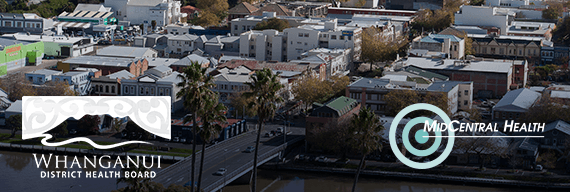Hospital assessments using timeboxed surveys and virtual data
Download the full case study here.
Summary
A large Australasian healthcare provider needed to review, rationalise and extend its component level asset register across building fabric, essential services, and biomedical equipment. Two hospitals in Perth were used as a pilot, but to assess over $1 billion of assets across the two sites could have taken months. Instead, SPM Assets applied a ‘timeboxed’ approach to the infield assessments; leveraged higher quality existing data; and utilised ‘virtual data’ for rooms having a common layout. This risk-based approach saved a substantial amount of time compared to a traditional assessment. The healthcare provider also implemented a continuous data improvement process whereby 20% of the data would be updated annually in a targeted and strategic way. The higher quality of data allows the healthcare provider to produce evidence-based works programmes that can be relied on.
The goal
The client’s goal was to better manage its significant investment in building and medical equipment assets using a planned approach aligned with ISO 55000. The starting point was to first review and improve the healthcare provider’s asset register. Considering the size and extent of the portfolio, the healthcare provider needed a cost-effective approach that would create the platform for further improvement over time. However, this needed to be done in a way that would save time and cut down on complexity – yet still be accurate.
The challenges
The client recognised the following challenges:
- The time needed to assess 17 sites across Australia to a component level would be significant – and the value gained questionable.
- While the internal assets team was experienced, their availability was limited, and the timeframe was tight. It was decided that their input was to be strategic.
- Existing asset data was limited to building equipment and medical equipment, with minimal building fabric information.
- The asset data held in the maintenance management software and the financial asset register needed to be better aligned, and new processes set up to ensure on-going alignment.
- As each hospital operated independently, a variety of asset management procedures were used across the different sites.
Timeboxed surveys
- Established the survey time budget.
- Confirmed assets and spaces of higher importance that must be visually surveyed (critical).
- Completed the ‘scouting survey’ for the room templates for a good cross section of room types.
- Sample verification of the existing CMMS data was carried out through visual assessments.
- Surveyed the critical assets.
- Assessed the external fabric of each building.
- Assessed the internal fabric with the remaining time.
Virtual data models
- Created a ground, building, floor, and space data model from CMMS data and PDF plans.
- Built template data models for rooms with common components and characteristics through a ‘scouting survey’.
- Applied the SPM Reference Libraries to complete both the virtual models and any missing CMMS data.
- Cloned the data models to rooms of similar characteristics, e.g. two of 20 patient rooms on a Ward were surveyed, and the results were cloned to the other 18.
Our solution
Considering the size and extent of the portfolio, the client needed a cost-effective approach that would create a platform for further improvement over time.
Two hospitals with a combined asset value of over $1 billion were used as a pilot. However, to assess such a range and depth of assets could have taken months: instead, SPM Assets and its client applied a ‘timeboxed’ approach to the infield assessments; leveraged higher quality existing data; and utilised ‘virtual data’ for rooms having a common layout.
This risk-based approach saved a substantial amount of time when compared to a traditional assessment.
A staged approach
The healthcare provider engaged SPM Assets to work collaboratively on following a staged approach:
- The principles of IPWEA’s NAMS.Property eManual were applied to a pilot assessment of one hospital. The timeboxed survey and creation of virtual data models reduced the on-site to three weeks. The platform was created by utilising quality data maintained in the CMMS.
- Collective learning from the pilot project meant that an updated approach was applied to the next hospital. Additionally, the data from the first assessment was refreshed. A further six-week timeboxed survey targeted specific assets, and included verification between the maintenance and financial systems.
- Asset Management Plans (AMPs) were produced for both sites using the combined data within the SPM Platform. The results were communicated through presentations with key stakeholders to gain feedback for the wider roll out to other sites.
The next stages will be to:
- Complete a prioritised and targeted assessment of the other 15 sites to a level of detail that will enable 10-year AMPs to be developed to care for the existing facilities.
- Create a 20-year strategic AMP across the portfolio that will be driven by new clinical services plans. The healthcare provider will be able to have confidence in the underlying asset data, and as a result the future strategic asset plans can be relied on.
The client also implemented a continuous data improvement process whereby 20% of the data will be updated annually in a targeted and strategic way. This allows the healthcare provider to produce evidence-based works programmes that can be relied on.
The benefits
- Time savings of an estimated 70%.
- Results provided 82% confidence in the data: completeness (70%), accuracy (85%), and reliability (90%).
- Data and process inconsistencies between sites were overcome.
- Enabled an easier way to continually improve data over time.
- Created the ability to differentiate between lower-risk building fabrics with lower data quality, through to highly reliable data for the higher-risk equipment.
- Evidence-based AMPs and lifecycle forecasts were created, and works programmes were generated automatically from the SPM Platform.
- Knowledge and ownership was transferred to the client, with a clear pathway and process for the client to continue its asset management planning process over time.
Summary of benefits
The healthcare provider created a robust and up-todate asset register at a component level in 30% of the time it would have normally taken. The strategic and targeted approach with timeboxed surveys and virtual data provided a great platform and process that will allow this organisation to continue on its journey to being aligned with ISO 55000. As a result, the client can have confidence in their longer-term asset planning process, and ensure the right projects are done at the right time, and for the right reasons.


.jpg?width=570&height=192&name=HatoHoneStJohnImage%20(002).jpg)